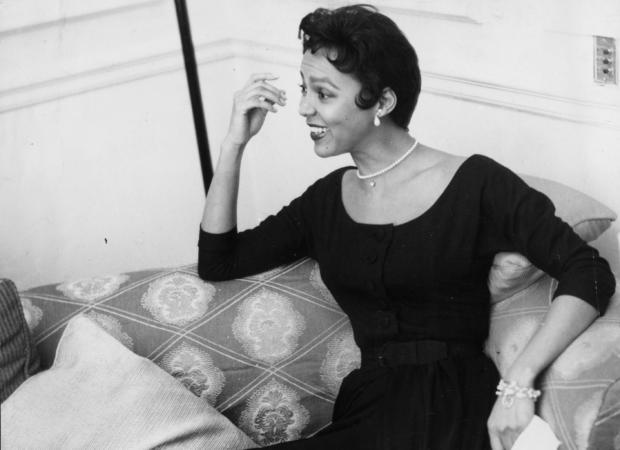The life of Dorothy Dandridge is a bittersweet tale of career highs and societal induced lows. Although she is remembered today as an entertainment pioneer who paved the way for many Black actresses, her success was oftentimes overshadowed by racism and financial mishaps. Even though Dandridge reached stardom and her legacy is still celebrated today, it is said that the famous actress died with only two dollars in her bank account, according to ThoughtCo.
At a young age, Dandridge could sing, dance, and act; skills that her mother’s lover, Geneva Williams took notice of. Williams made it her mission to hone Dandridge’s natural abilities, and soon Dandridge and her sister Vivian formed The Wonder Children. The duo began touring southern churches with the National Baptist Convention.
The duo, now known as The Dandridge Sisters, would get their big break in 1935 when they made their Paramount debut in “The Big Broadcast of 1936.” This role led to other roles in Hollywood like “Jeepers Creepers,” where they performed alongside Louis Armstrong.
The Dandridge Sisters had much success including a European tour which was cut short by World War II and bookings at the popular New York Cotton Club. Eventually the group split, and Dorothy began her solo career.
In 1942, Dandridge married Harold Nicholas, a dancer she met several years ago at the Cotton Club, and began to build her solo career by appearing in low budget films like “Four Shall Die” in 1940 and “Sundown” in 1941. Although acting roles were steady, Dandridge refused to accept any role that would require her to portray a slave or servant.
Things began to fall apart for Dandridge, after the birth of her daughter Harolyn “Lynn” Suzanne Dandridge, in 1943. Harolyn suffered from Cerebral Anoxia, a condition caused by a lack of oxygen to the brain during labor. The condition meant that Harolyn would have speech delays, intellectual challenges, and reduction in short-term memory. Harolyn’s disability put a strain on Dandridge’s already struggling marriage, and the couple divorced in 1949, according to her biography.
After her divorce, Dandridge’s career took off, and she landed the role of Carmen in the 1954 hit “Carmen Jones.” Dandridge became the first African American to grace the cover of “Life” magazine and also the first Black actress nominated for “Best Actress” by the Academy at 32-years-old.
Even though Dandridge had massive success, racism still plagued her career. When on tour, she was not allowed to use the same bathroom, lobby, or swimming pools as her non-Black counterparts. Even on her headlining tour, Dandridge’s dressing room was usually the janitor’s closet. However, Dandridge did not let this stop her; she went on to become the first African American to stay in and perform at the Waldorf Astoria hotel.
In 1959, Dandridge married Jack Denison, the owner of a failing restaurant. Dandridge began performing at the restaurant to attract customers and heavily invested in Denison’s business venture. He soon became abusive, which led to Dandridge filing for divorce in 1962. She is said to have made $250,000 the year she married him, but at the end of the marriage she was broke and had to file for bankruptcy. Not only did the marriage drain her bank account, but she also started taking antidepressant medication and drinking excessively.
Dandridge died on Sept. 8, 1965 at the age of 42. She was found on the bathroom floor by her manager, Earl Mills who arrived at her home to take her to a scheduled doctor’s visit for a foot injury she suffered in Mexico.
Dandridge’s death was initially said to be a result of a fat embolism from her fractured foot. However, an autopsy later confirmed that she had a high amount of the medication Tofranil, an antidepressant, in her system. Whether it was accidental or on purpose is unknown. What is known is that Dandridge gave a letter to Mills months before her death that asked him to give all her belongings to her mother.
Despite all her successes and achievements, Dandridge’s bank account had a total of $2.14 at the time of her death.
Dandridge has since been remembered in movies like “Introducing Dorothy Dandridge” starring Halle Berry, and honored with a star on the Hollywood Walk of Fame.

